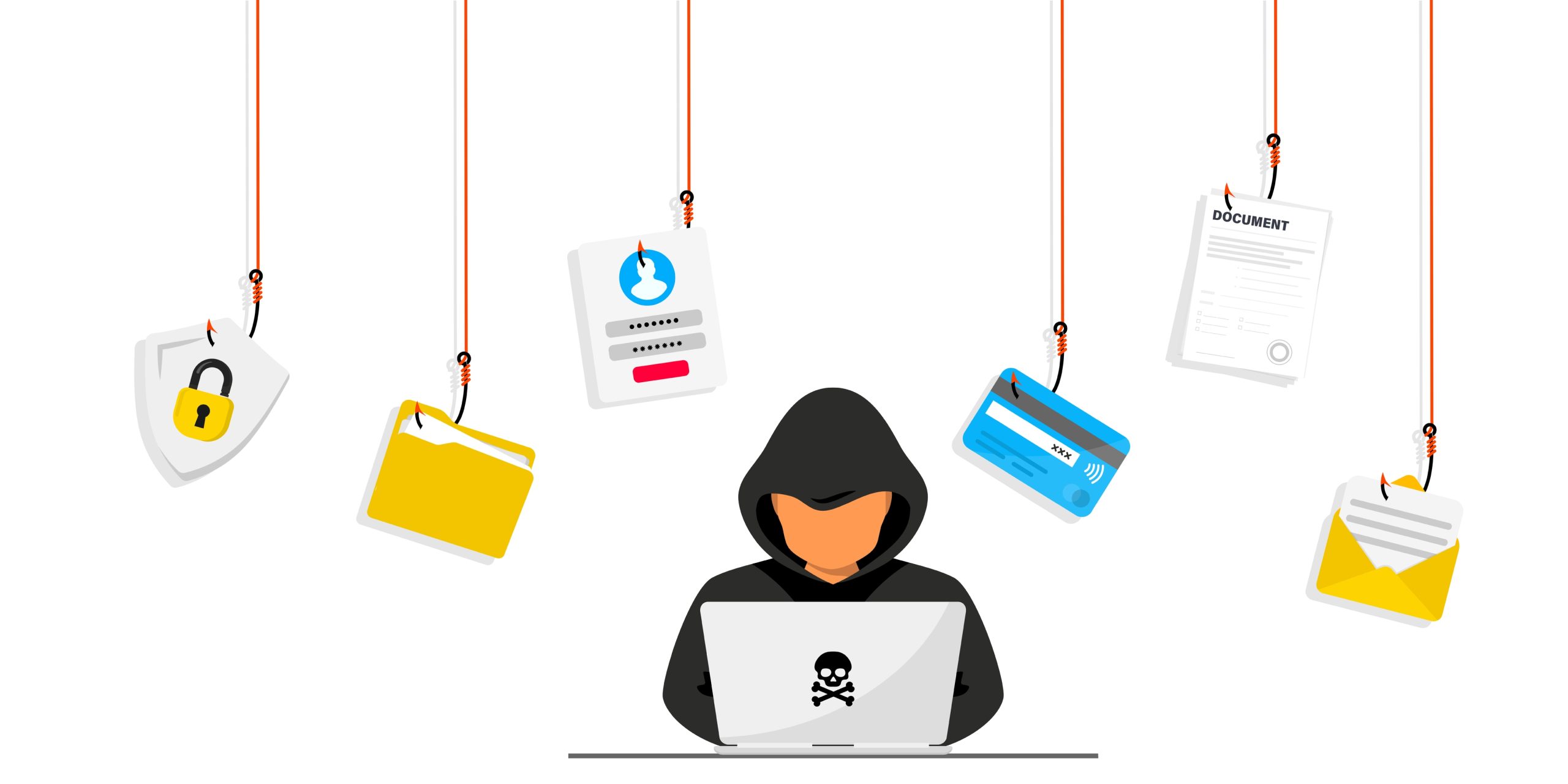Is phishing really such a big deal?
No not fishing with a rod and reel, phishing… tricking people into handing over information. These scams are getting smarter unless you know what to look out for you could lose big time!
What Are Phishing Scams?
Phishing scams are all about deception. Scammers try to trick you into handing over sensitive information like your passwords, credit card numbers, or other personal details, by pretending to be someone you trust. Here’s a quick rundown of the most common types:
Email Phishing: This is the classic phishing scam. You get an email that looks like it’s from a legitimate source, like your bank or a well-known company. The email might ask you to click a link or open an attachment which then prompts you to give away personal information and logins, or installs malware on your computer.
Spear Phishing: Unlike general phishing, spear phishing is targeted. Scammers do their homework and craft emails that are personalised for you. They might pretend to be your boss or a trusted colleague to get you to share confidential information or make a payment.
Whaling: Whaling is just a fancy term for spear phishing but aimed at big shots like CEOs or CFOs. These scams are usually disguised as important business communications and can be very convincing, which makes them particularly dangerous.
Smishing (SMS Phishing): Instead of emails, smishing uses text messages to lure you into clicking on malicious links or calling fake numbers. It’s like phishing, but through your phone. Statistics show people respond more quickly and more often to text messages than to emails.
Vishing (Voice Phishing): This is phishing over the phone. Scammers might call you pretending to be from your bank or a government agency, trying to get you to share personal details or make urgent payments.
Pharming: Pharming messes with your web traffic. When you try to visit a legitimate website, pharming redirects you to a fake one that looks just like the real deal. It’s a sneaky way to capture your login details or personal info. You can be “pharmed” just by clicking on a link.
Clone Phishing: Clone phishing is when scammers create a near-identical copy of a legitimate email you’ve received before. The fake email will have malicious links or attachments, hoping you’ll click on them because you recognise the original message. These are often from compromised mailboxes. The scammer looks through the victim’s email history to find useful email sent previously such as invoices.
What’s New in 2024?
Phishing has been around for many years now, but the scams keep evolving, and 2024 has seen many sophisticated developments that make phishing harder to detect. Here’s what’s hot right now:
AI-Powered Phishing: Scammers are now using artificial intelligence to make their phishing more convincing. AI can analyse data to mimic the writing style of people you know, making those emails look super authentic.
Deepfake Phishing: Deepfakes are becoming a tool for scammers too. They can create realistic audio or video clips that impersonate people you trust, like your boss. These deepfakes can trick you into following dubious instructions or revealing sensitive info.
Social Media Phishing: Phishing isn’t just limited to email anymore. Attackers are targeting social media platforms to gather personal details and craft targeted phishing messages. They might use fake profiles or hacked accounts to spread malicious links.
Cryptocurrency Scams: With cryptocurrencies booming, scammers are targeting crypto users more than ever. They might set up fake exchanges or wallet services to steal your digital assets. Be extra cautious if you’re dealing with cryptocurrencies.
Voice Phishing Through Smart Devices: As smart devices become more common, so do the scams. Attackers are finding ways to exploit voice assistants to trick you into giving away personal information or making fraudulent transactions.
Why Should You Care?
Aren’t victims mostly large corporates or people with high public profiles? Think again! Every person online is a target. AI and machine learning means criminals can target millions of people rapidly. If a scam only works one in a thousand attempts, the crook can make a substantial profit from a bulk scam hitting a million people in an hour.
Here is what you can lose:
Your money: Falling for a phishing scam can result in direct financial loss. Whether it’s through fraudulent transactions or stolen funds, these scams can seriously hurt your bottom line.
Your reputation: If your business gets hit by a phishing scam, it can tarnish your reputation. Customers might lose trust in your ability to protect their information, which can lead to lost business and damaged relationships.
Your identity: Phishing attacks often lead to data breaches, where sensitive information like customer data or financial records is exposed. This can have serious legal and regulatory consequences, including hefty fines.
Your business: Some phishing scams introduce malware or ransomware that can disrupt your business operations. This means downtime, lost productivity, and a lot of hassle while you try to get everything back on track.
Your license: Businesses are required to protect sensitive information under various regulations. A data breach resulting from a phishing attack can lead to legal and compliance breaches that could land you in court.
What Can You Do About It?
Here are some steps to keep your business safe from phishing scams:
Educate Your Team: Make sure everyone knows what phishing looks like and how to handle suspicious emails or messages. Regular training is the single best protection you can offer to your team.
Use Advanced Security Tools: Invest in security solutions that can detect and block phishing attempts. The extra few dollars per month will pay for itself
Enforce Multi-factor authentication everywhere it is available: MFA) will stop most mailbox compromise attempts from succeeding .
Keep All Your Devices Updated: Don’t turn off or delay the security updates on your devices (at home or at work). These protect against known vulnerabilities that scammers exploit.
Have an Incident Response Plan: Every business needs a security policy and a plan for how to keep the business running in case of a serious incident. Both these need to be reviewed and tested regularly. The right controls and actions can minimise the damage if an attack does occur.
Phishing scams are more sophisticated and dangerous than ever before and every business is vulnerable to these deceptive attacks. Helping protect your business from these threats is WHAT WE DO at FooForce. We specialise in IT security and can help you defend your organisation through effective security.
Contact us for advice about your IT.
Frances Russell Managing Director FooForce

